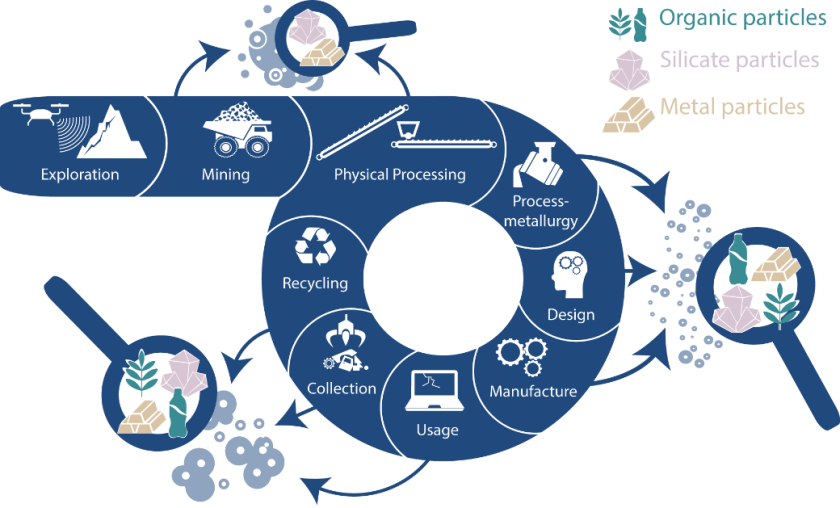Fine particles back into the raw material cycle

Within three subprojects, organic, metallic and fines that could be recycled into cement are being investigated. © FINEST
Industrial processes always produce fine-grained residues. These rarely find their way back into the industrial value chain, but are usually disposed of and represent a potential environmental risk. The FINEST project records and investigates various of these fine-grained material flows with the aim of developing new concepts to keep them in the cycle and safely dispose of remaining residues.
FINEST was successful in the Helmholtz Association's sustainability competition and will now receive 5 million euros in funding.
The project is coordinated by the Helmholtz Institute Freiberg for Resource Technology (HIF) at the Helmholtz-Zentrum Dresden-Rossendorf (HZDR) and involves teams at the Helmholtz-Zentrum Berlin (HZB), the Karlsruhe Institute of Technology (KIT), the Helmholtz Centre for Environmental Research (UFZ), the TU Bergakademie Freiberg (TUBAF) and the University of Greifswald.
The HZB is participating in FINEST in a project on the degradation of microplastics. "Together with the UFZ, we want to investigate how microplastic particles can be degraded, for example by bacterial enzymes that we improve on a structure basis. In addition, we also want to work with the HZDR to develop new detection methods for micro- and nanoplastics," says Dr. Gert Weber, who conducts research in the Macromolecular Crystallography Group at the HZB.
Starting in July 2022, the researchers from the six participating institutions will work in the five-year project on ultra-fine materials of anthropogenic origin such as microplastics, mineral additives (additives) or metals, for which there are currently hardly any recycling options. Innovative processes are to be used to increase the currently still very low recycling rates of these fine particulate materials and to deposit the remaining residues harmlessly in order to advance a sustainable circular economy.
Read the full text of the press release at the website of HZDR
HZDR/HZB
https://www.helmholtz-berlin.de/pubbin/news_seite?nid=23927;sprache=en
- Copy link
-
Optical innovations for solar modules - which are the most promising?
In 2023, photovoltaic systems generated more than 5% of the world’s electrical energy and the installed capacity doubles every two to three years. Optical technologies can further increase the efficiency of solar modules and open up new applications, such as coloured solar modules for facades. Now, 27 experts provide a comprehensive overview of the state of research and assess the most promising innovations. The report, which is also of interest to stakeholders in funding and science management, was coordinated by HZB scientists Prof. Christiane Becker and Dr. Klaus Jäger.
-
Catalysis research with the X-ray microscope at BESSY II
Contrary to what we learned at school, some catalysts do change during the reaction: for example, certain electrocatalysts can change their structure and composition during the reaction when an electric field is applied. The X-ray microscope TXM at BESSY II in Berlin is a unique tool for studying such changes in detail. The results help to develop innovative catalysts for a wide range of applications. One example was recently published in Nature Materials. It involved the synthesis of ammonia from waste nitrates.
-
BESSY II: Magnetic ‘microflowers’ enhance magnetic fields locally
A flower-shaped structure only a few micrometres in size made of a nickel-iron alloy can concentrate and locally enhance magnetic fields. The size of the effect can be controlled by varying the geometry and number of 'petals'. This magnetic metamaterial developed by Dr Anna Palau's group at the Institut de Ciencia de Materials de Barcelona (ICMAB) in collaboration with her partners of the CHIST-ERA MetaMagIC project, has now been studied at BESSY II in collaboration with Dr Sergio Valencia. Such a device can be used to increase the sensitivity of magnetic sensors, to reduce the energy required for creating local magnetic fields, but also, at the PEEM experimental station, to study samples under much higher magnetic fields than currently possible.
